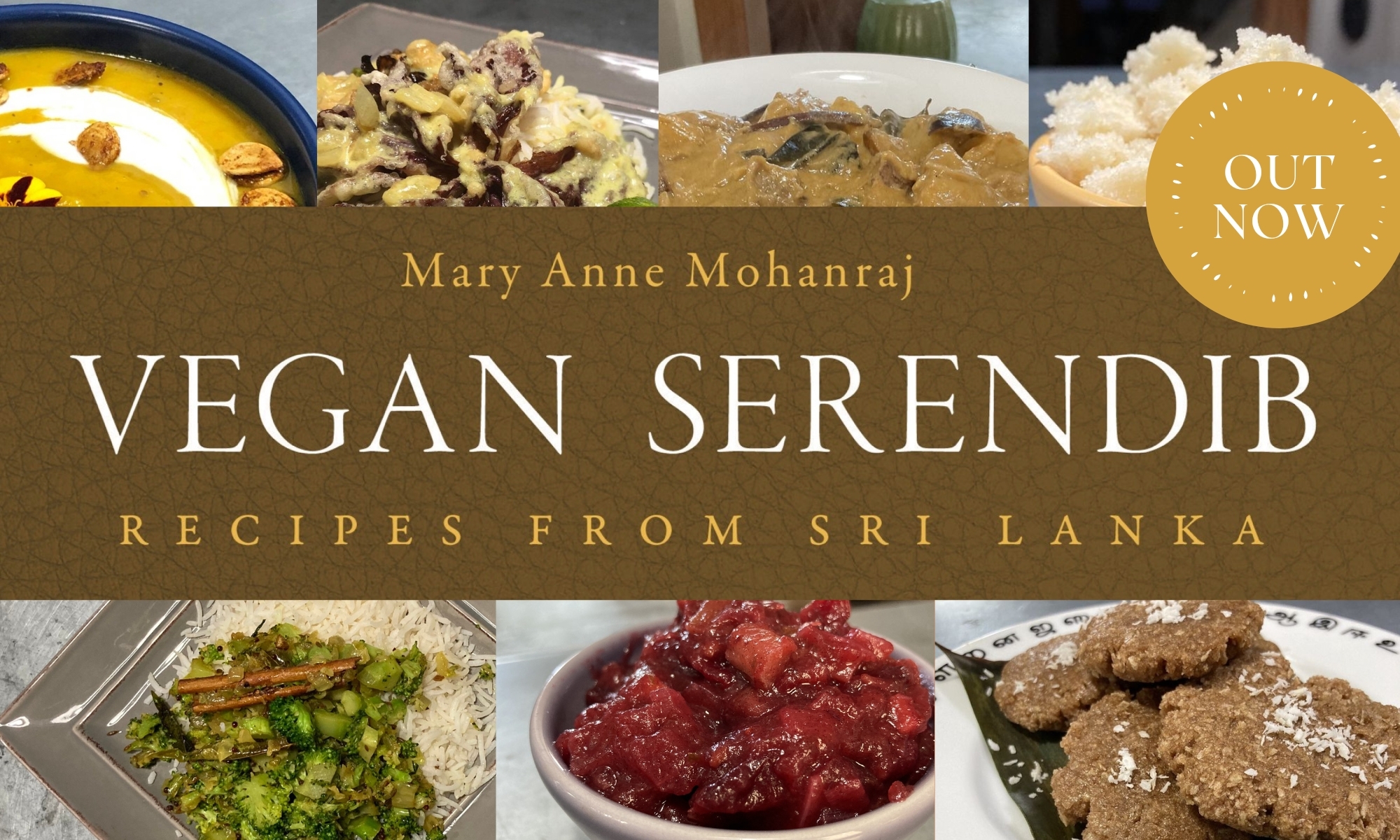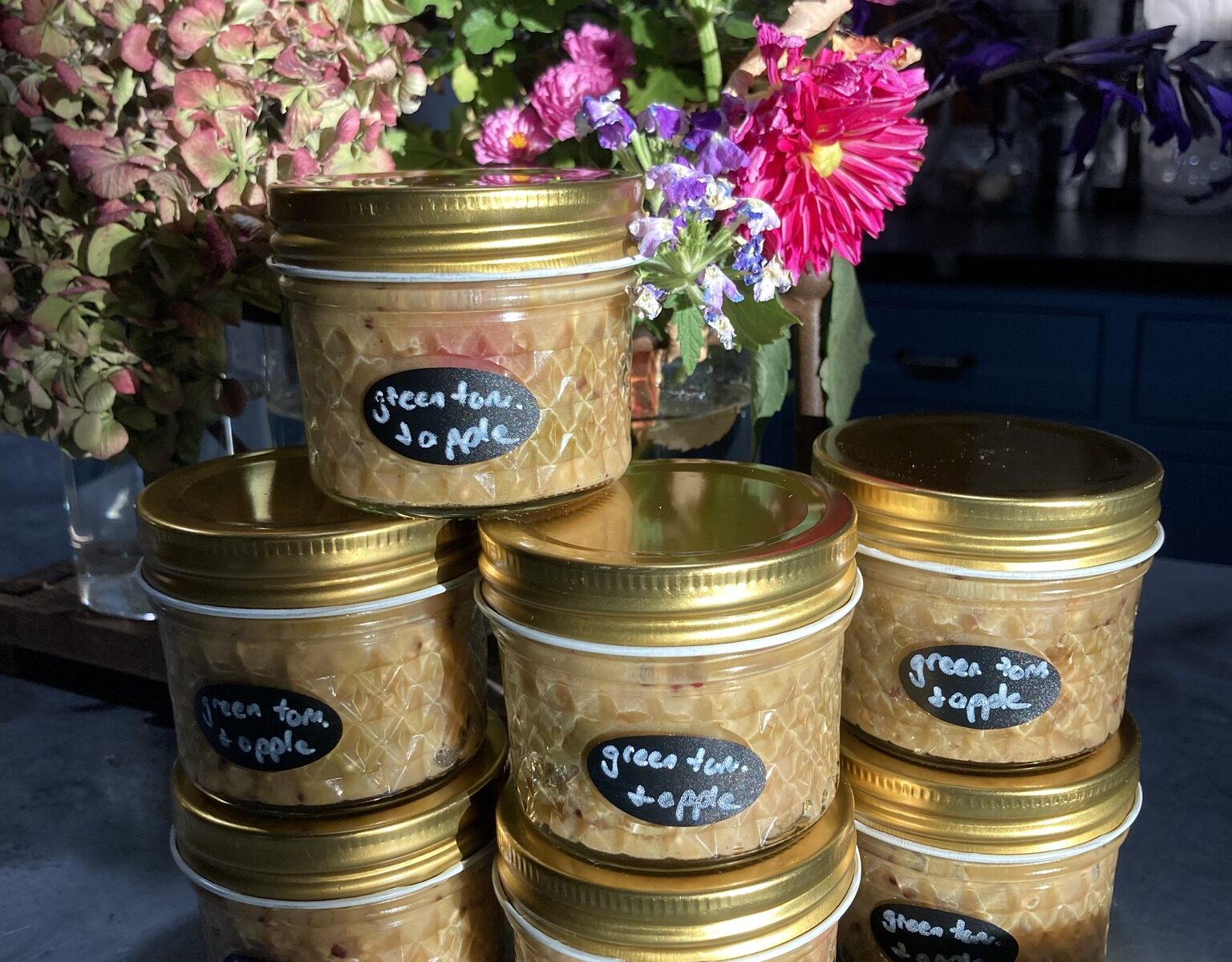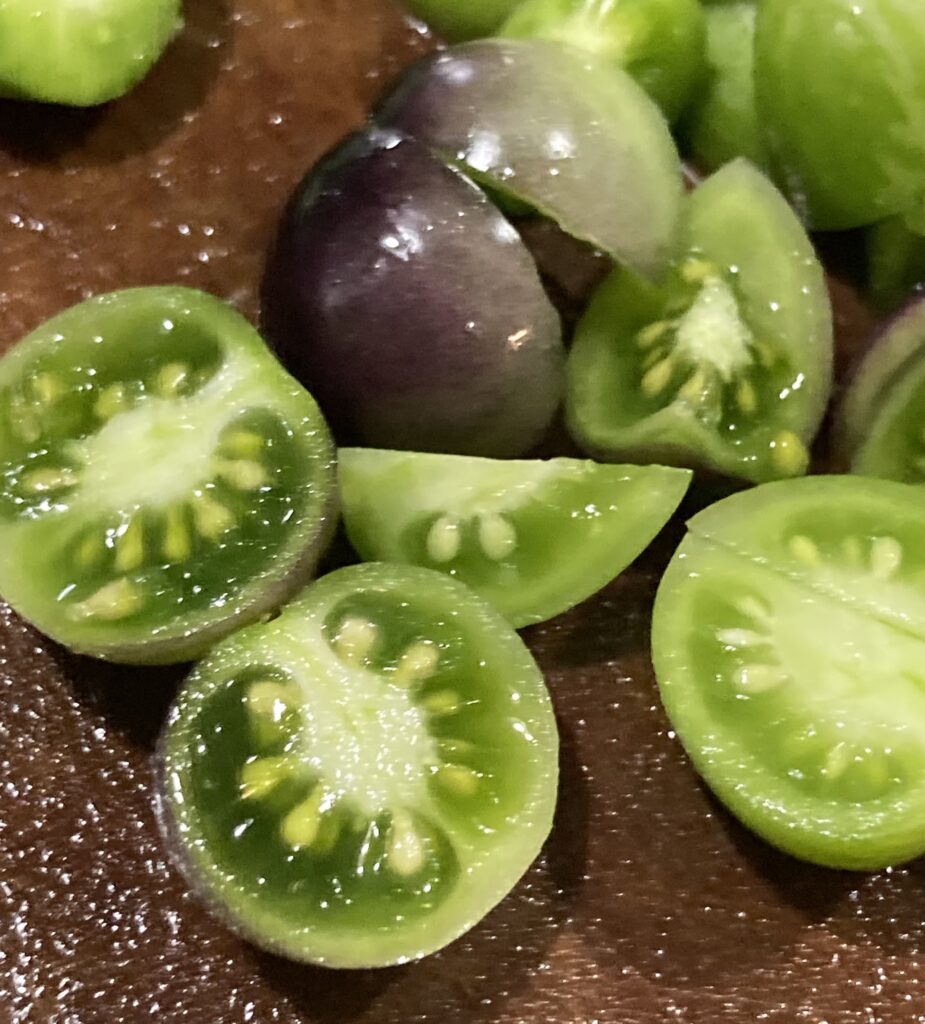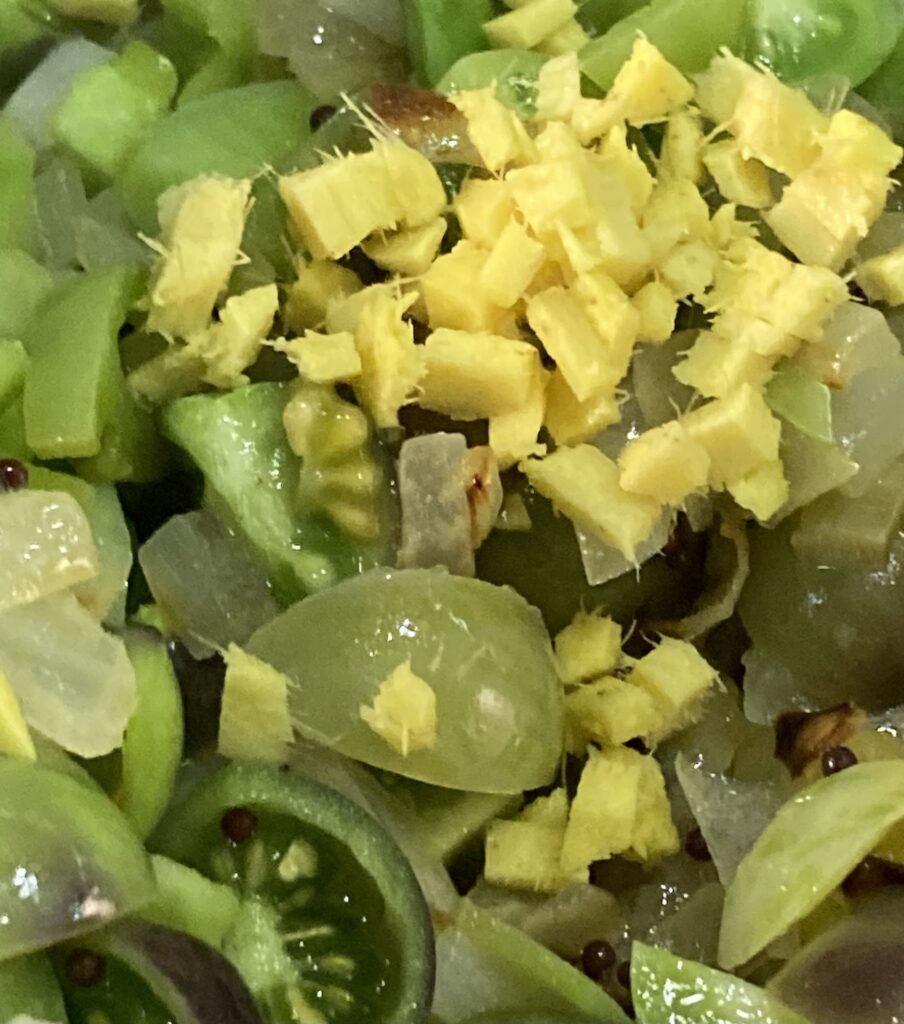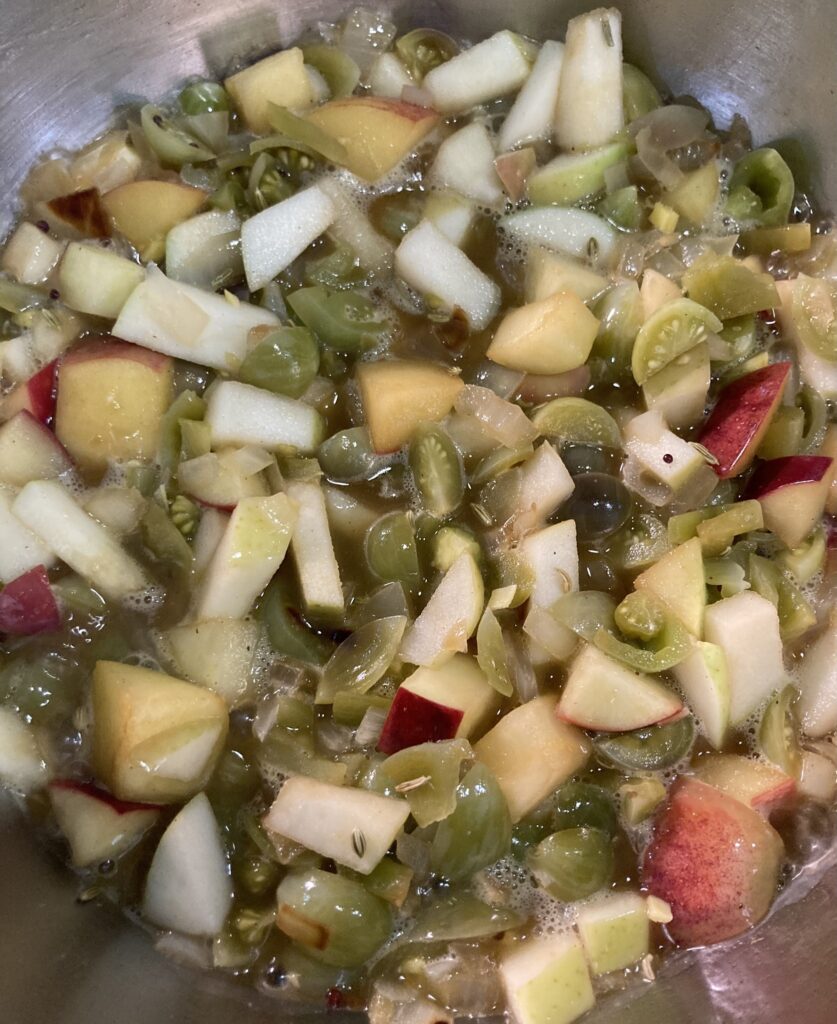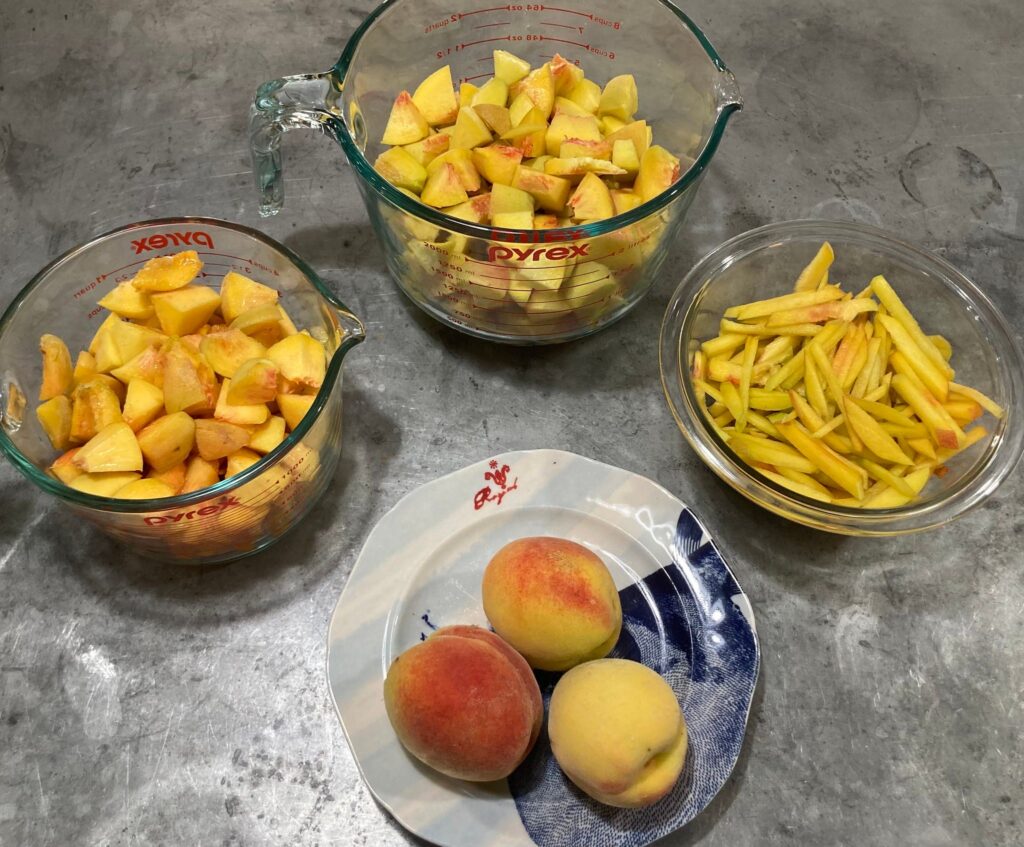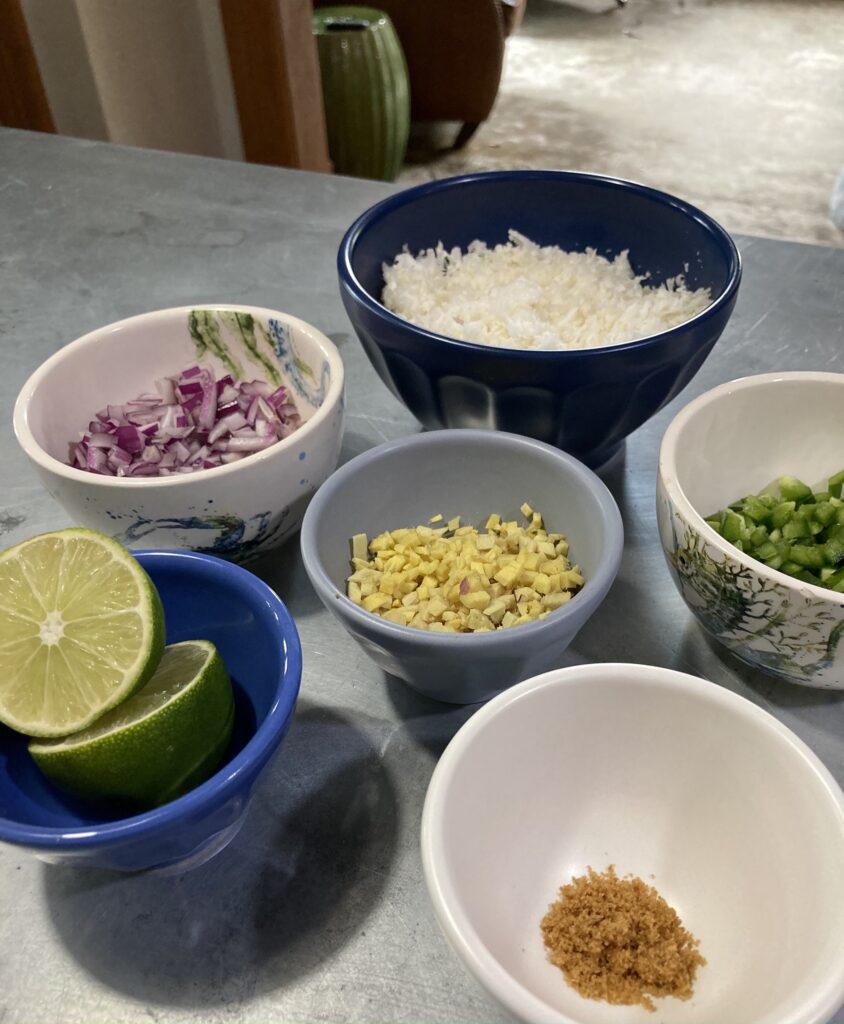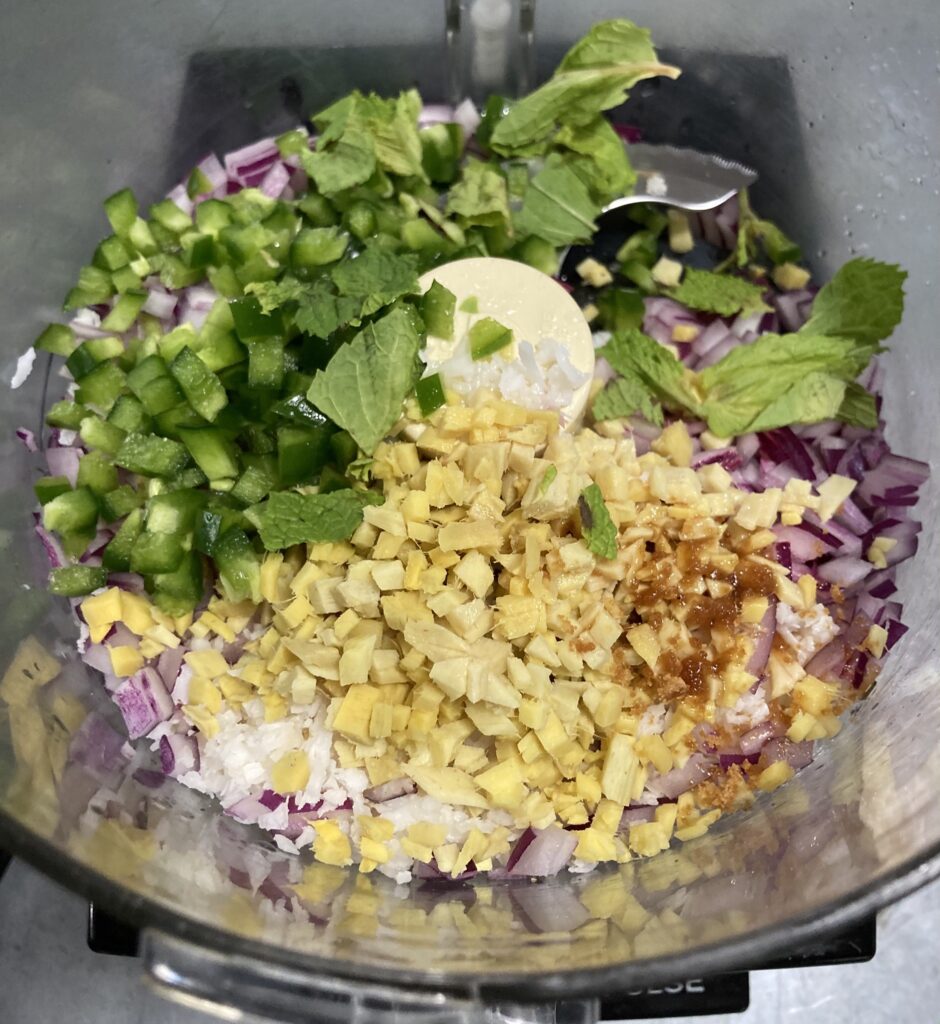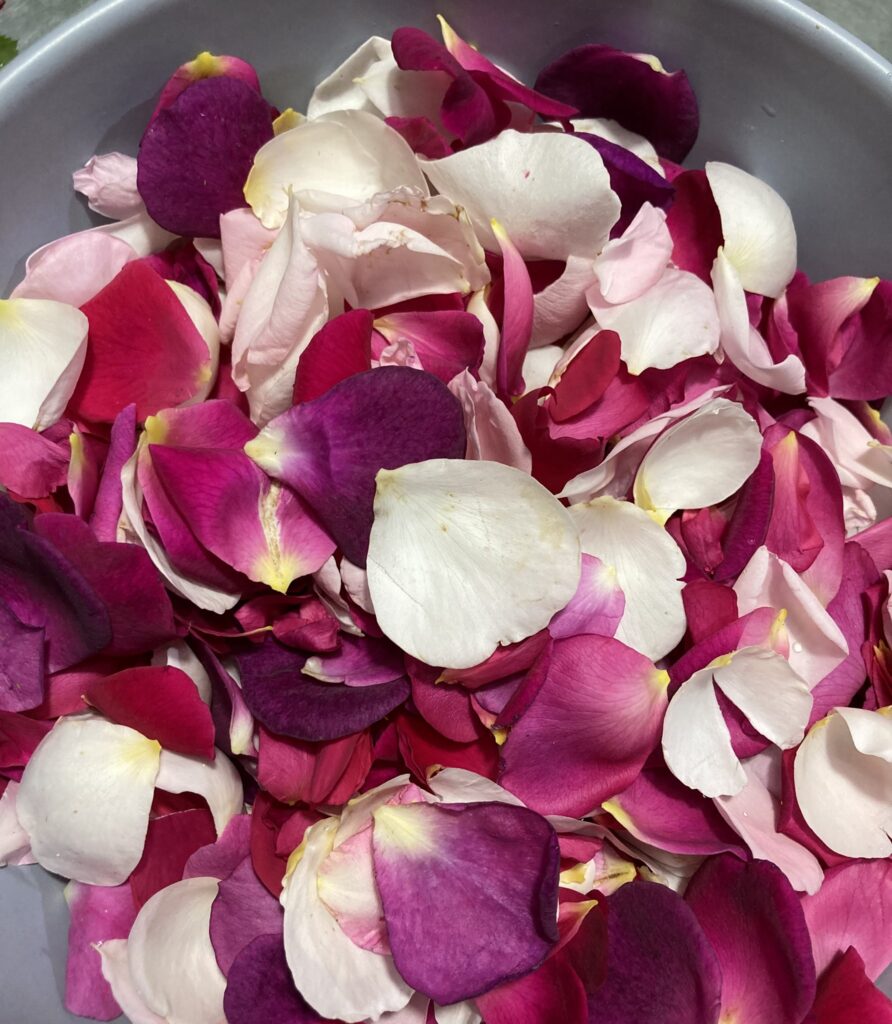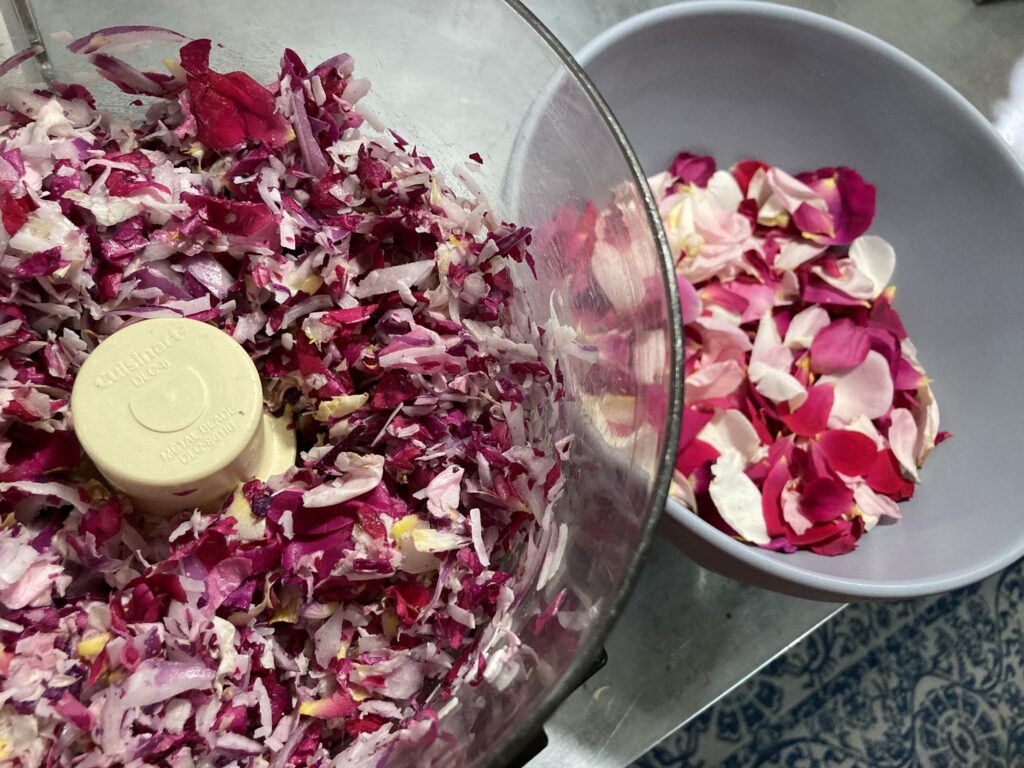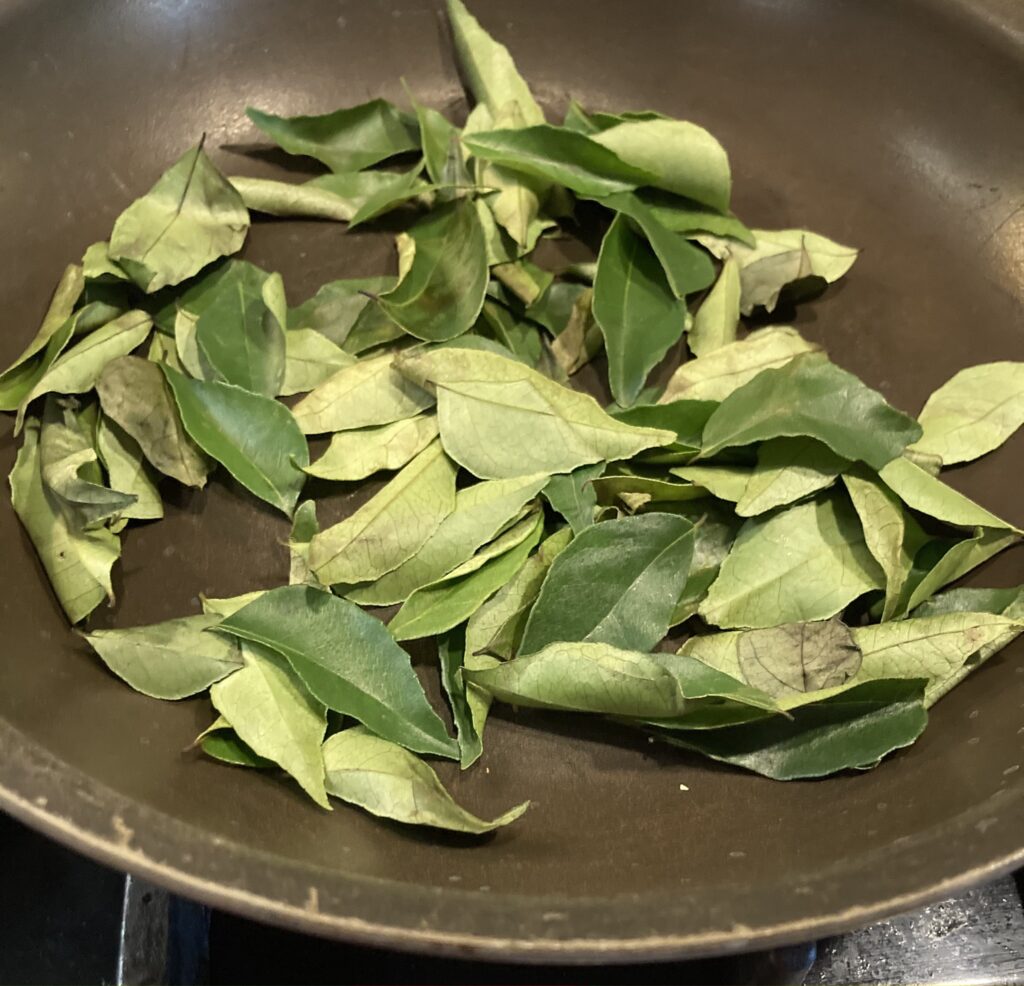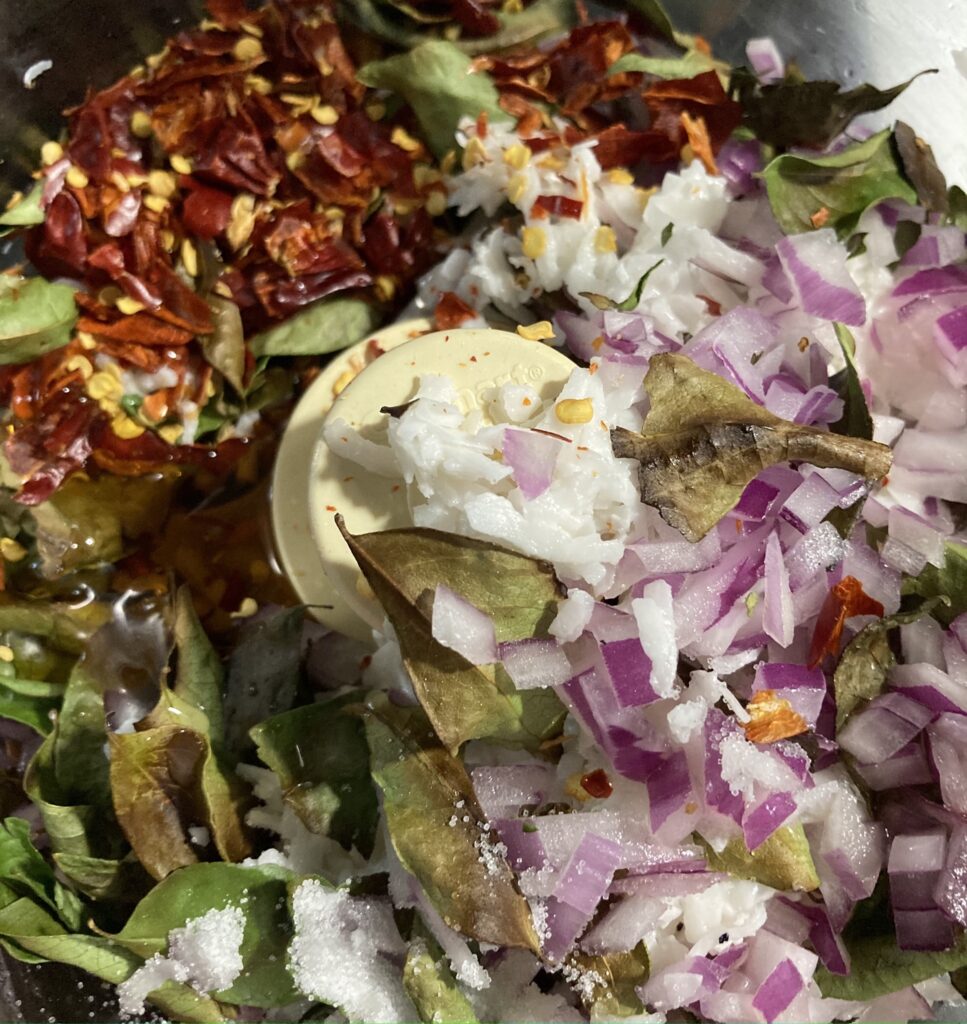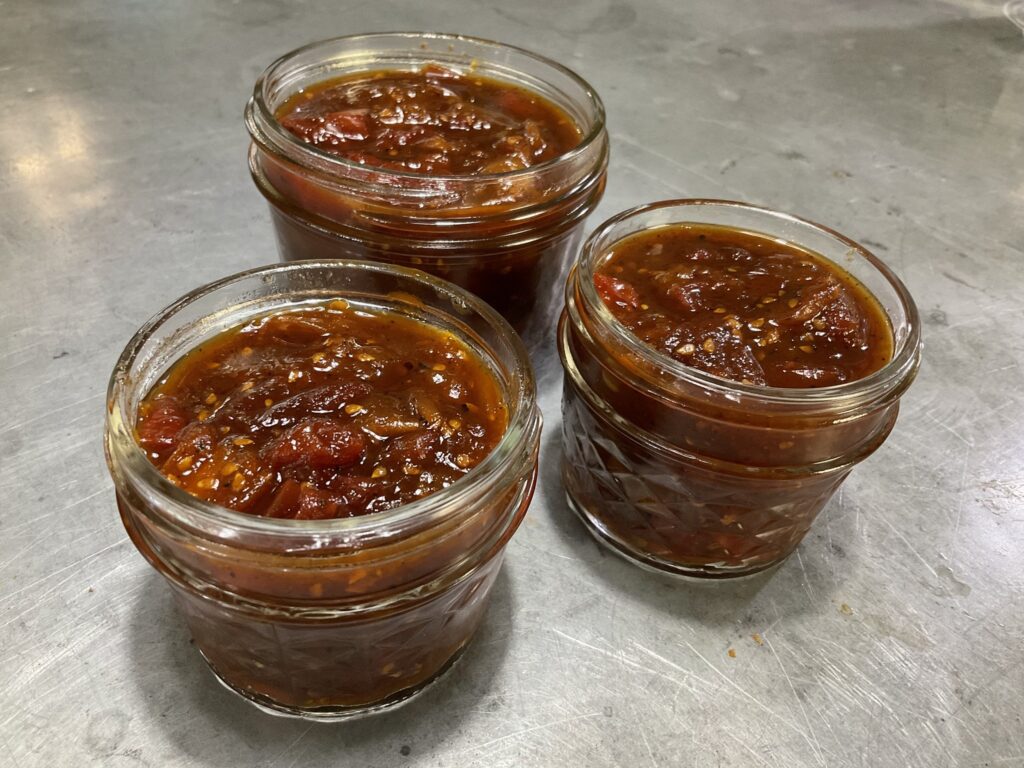Recipe here: https://serendibkitchen.com/…/sri-lankan-green-tomato…/
A Nice Sri Lankan-Style Pickle
Green peaches make a nice Sri Lankan-style pickle. ![]()
I pretty much just used my pineapple pickle recipe and subbed in green peaches instead, easing back a little on the spice level so the subtlety of the peaches could come through.
https://serendibkitchen.com/…/spicy-pineapple-pickle…/
Cherry-Ginger Chutney
(45 minutes, serves 8.)
This is basically my mango-ginger chutney, but with cherries, because cherries are in season now, and I keep buying them because I love them so.
You don’t actually need to cook a chutney—you can just chop up some fruit and mix it with spices and serve; that would be common in Sri Lanka. But I prefer a more blended chutney, with a mellower flavor. A great quick appetizer for a party is serving this with crackers and cheddar cheese.
3 c. cherries, pitted and halved
1 rounded tsp salt
1 cup malt vinegar
3 dried chilies (optional)
3 TBL fresh ginger, peeled and chopped fine
3/4 – 1 cup sugar
1/3 cup dried fruit (I used a mix of what I had on hand, but raisins, sultanas, mango, etc., would all be good)
1 rounded tsp Sri Lankan curry powder
1. Put cherries in a large bowl and sprinkle with salt.
2. Remove stalks and seeds from chilies (if used) and soak chilies in a little vinegar for 10 minutes. Combine vinegar, ginger, and chilies in a blender and blend (you can alternatively pound the chilies with a mortar and pestle and grate the ginger in).
3. Put blended mixture in a stainless steel pan with curry powder and sugar and bring to a boil. Simmer, uncovered, for 15 minutes.
4. Add cherries and dried fruit. Turn heat back to medium-high and cook, stirring occasionally, until thick and syrupy.
5. Cool and serve with rice and curries, or add to a sandwich – it’s great with grilled chicken or pork. You can also use the slightly more liquid version as a salad dressing.
Note: You can substitute green apples, pears, apricots, etc. for cherries. Or mix and match!
Note 2: If not eating immediately, store in a jar in the fridge for a few weeks, or in the pantry for months, if canned and sterilized properly.
Time for Optional Cooking
You can tell I’m not as frantic as I was, because I have time to do optional cooking again. There were a few months there when I was working harder and longer than I ever have in my life, and eating became very functional — too many frozen meals, packet ramen, whatever was easy and fast. I was relatively careful about nutrition, so it worked okay as body fuel, but it wasn’t food that made me happy.
There are certain condiments that I’d always like to have in my fridge. Fresh tomatillo sauce; Kevin makes a great one. Pol (coconut) sambol. MD green chili sauce. But if I had to pick just one condiment, it’d be seeni sambol — sweet and spicy and salty, all balanced for a hit of amazing flavor.
Last week, I finally took the time to replenish my supply of seeni sambol, which is a long, slow process, caramelizing the onions. I can’t do it when I’m running frantic. I generally make the vegan version, so Kevin can eat it too, because he doesn’t like fish. It’s better with the little punch of Maldive fish, but it’s still really, really good without. If I want a teatime snack, a slice of toasted bread with butter and seeni sambol is perfect with a cup of hot, sweet, milky tea.
For breakfast today, I took a little naan and some leftover grilled steak from last night’s dinner, and topped that with seeni sambol. A few minutes in the toaster oven, and I had a delicious breakfast. A lot healthier than reheating a frozen meal too!
It’s so nice, to be able to take proper care of myself again. Having a fresh jar of seeni sambol in the fridge is just comforting. I’m going to try not to let that run out again — it’s like the canary in the coal mine. When I’m out of seeni sambol, it’s a sign that I’m working too hard, and it’s time to try to slow down.
Do you have a must-have condiment that makes everything in your life better? Or is that just me? ![]()
Recipe here: https://serendibkitchen.com/…/sweet-onion-sambol-seeni…/
Cranberry-Rhubarb Chutney
(20-25 minutes, makes 1 quart)
Kevin loves both cranberries and rhubarb, so I decided to combine them, just for him. You can enjoy this chutney right away, or put it up and save it to pull out at the holidays. Festive! As with any chutney, adjust to your taste — you can make it a little sweeter, a little tangier, a little spicier.
NOTE: Rhubarb leaves are toxic and humans should never ingest them. Please resist the urge to save them for a salad.
about 1 c. chopped rhubarb stalks
1. Combine all ingredients except rhubarb in a medium pot, bring to a boil, then turn down heat and simmer 10-20 minutes, stirring occasionally, until cranberries have popped and you have a sauce-like consistency.
2. Add rhubarb (if you add it at the beginning, it’ll lose all definition) and cook an additional 5 minutes, stirring. Rhubarb should be soft and cooked through.
Serve room temperature; chutney is a fabulous sandwich spread. Will keep for two weeks in the fridge, or may be canned for long-term storage.
Injii (Ginger) Sambol
pinch of jaggery or dark brown sugar
1. Combine ingredients in food processor, blender, or mortar-and-pestle and process until well-blended. Serve, garnished with fresh mint.
NOTE: May be frozen for later use.

Rose Sambol
When you have an overabundance of roses, you might make rose sambol. Is it the prettiest sambol? I think it might be.
1 t. salt
1. In a mortar & pestle, or food processor, combine ingredients until well blended. Taste and adjust seasonings. Serve with rice and curry, roti, or anywhere else you’d use sambol.
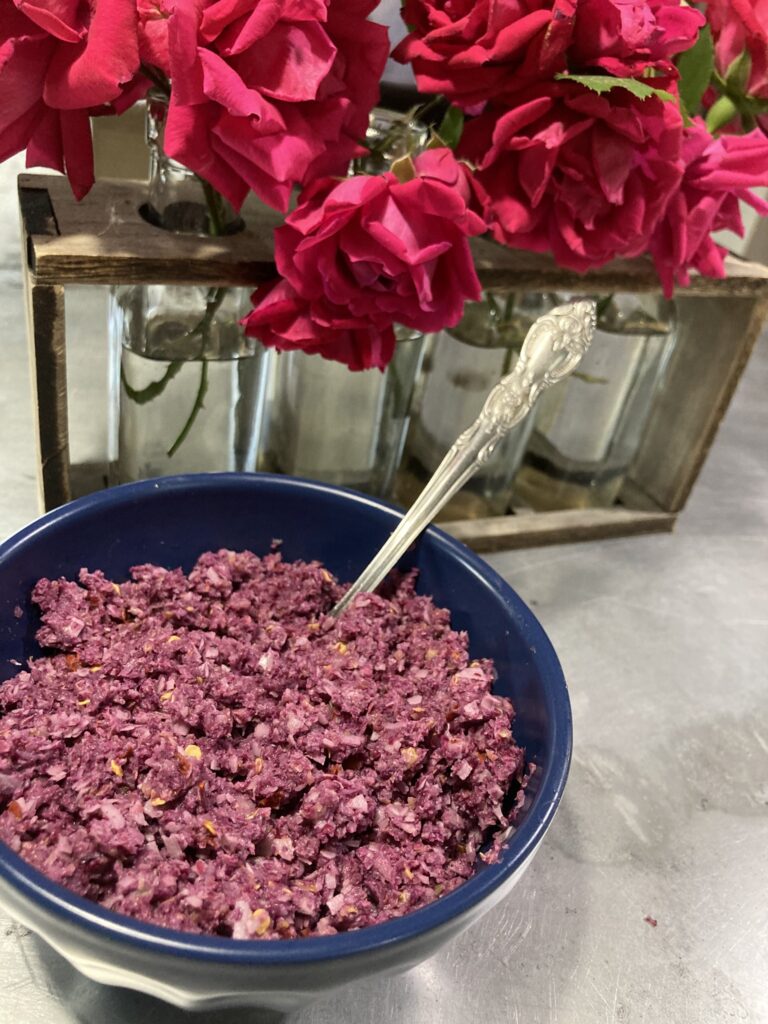
Karapincha / Curry Leaf Sambol
Note that curry leaves (flat, dark-green leaves) are botanically known as Murraya koenigii; they are aromatic and an essential element of Sri Lankan cuisine; they’re becoming more available in the States these days, and can also be ordered online to arrive as fresh leaves. They can be frozen if needed for use in curries, but for this sambol, it’s best to start with fresh green leaves. Do not confuse them with the ‘curry plant,’ which has fuzzy grey-green spiky leaves which smell like curry; it is not edible.
This recipe is a variation on one found in N. Maheswari Devi’s Jaffna Heritage Cooking; she notes: “These recipes, which were found handwritten on manuscripts date back to the pre-Portuguese period. Cooking with honey is an ancient practice, which has endured from generation to generation, and many age-old recipes which use honey as an ingredient can still be found today.”
I mention this in part because I was honestly surprised to see honey as an ingredient; I hadn’t thought of honey as a typical component of Sri Lankan cuisine. But honey is actually perfect in this recipe, beautifully balancing the savory and spicy elements.
1 t. salt
1. In a sauté pan, toast curry leaves on medium-high, stirring, until lightly toasted.
2. Either with a mortar and pestle, or in a food processor, combine all ingredients until well-blended. Taste and adjust seasonings, then serve with rice and curry, roti, etc.

Thakkaali Yaam / Spiced Tomato Jam
(1 hr, makes 2 c. jam)
This traditional Sri Lankan condiment, featuring rich tomato flavor gently spiced and sweetened with jaggery, is typically served with thosai, pittu, idli, or rice. It’s also delicious as a component in appetizers, spread on breakfast toast, as a topping for grilled vegetables — the possibilities are endless.
1 t. salt
1. In a hot dry pan, toast spices until aromatic. Let cool and grind to powder.
2. Add diced tomatoes to a medium saucepan with remaining ingredients, and bring to a boil. Stir until sugar has dissolved, then turn heat to low and cover.
3. Simmer about 40 minutes. Remove lid, and if mixture is still liquid, simmer uncovered a little longer, until it thickens to jam texture. Use wherever you’d use jam or chutney.
Variation: Replace half of the tomatoes with chopped pineapple.
Note: Jars can be stored in refrigerator for up to 2 weeks.
Redbud Butter
I learned how to make butter this week ! It turns out to be really easy, esp. if you have a mixer. You can also shake it in a mason jar, if you have a strong arm. ![]() And then you can do something that looks fancy, like adding in fresh edible blossoms, like redbuds, to make redbud butter.
And then you can do something that looks fancy, like adding in fresh edible blossoms, like redbuds, to make redbud butter.
1/2 c. fresh redbud blossoms, stems trimmed and discarded
1. Mix (or shake) cream & salt if using, starting on low speed and then increasing the speed as it thickens. After several minutes, you’ll have whipped cream — keep going! The whipped cream will start to yellow, then after several more minutes, the fat solids will separate. You’ll see clumps of butter fat forming, with sloshing liquid buttermilk in the bottom of the bowl.
2. Strain the butter fat from the buttermilk using a fine mesh strainer (or cheesecloth). Save the buttermilk in the fridge for later use in other recipes.
3. Pour cold water over the butter, drain, and repeat twice more. (This will help preserve it longer.)
4. Stir in redbud blossoms, then shape into a ball or log or use a mold for interesting designs. Enjoy!
